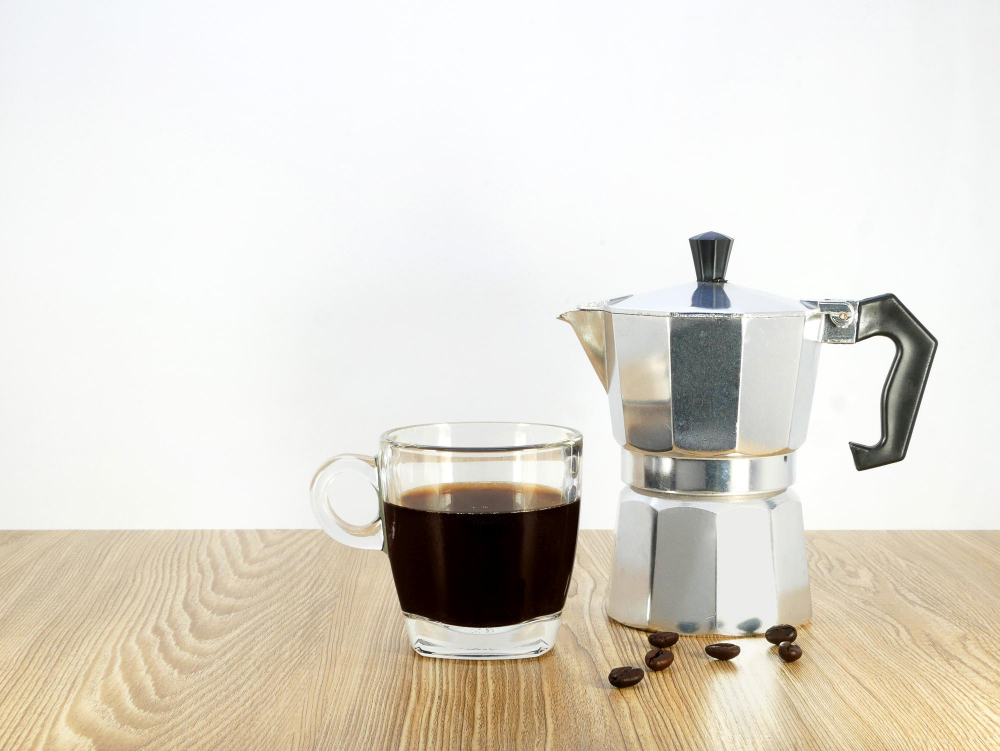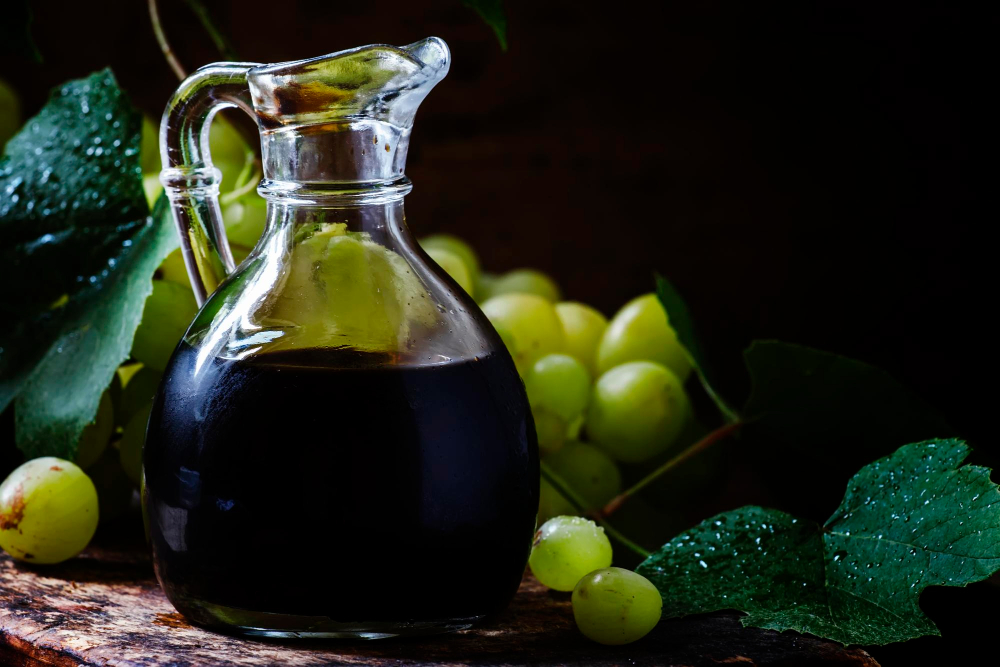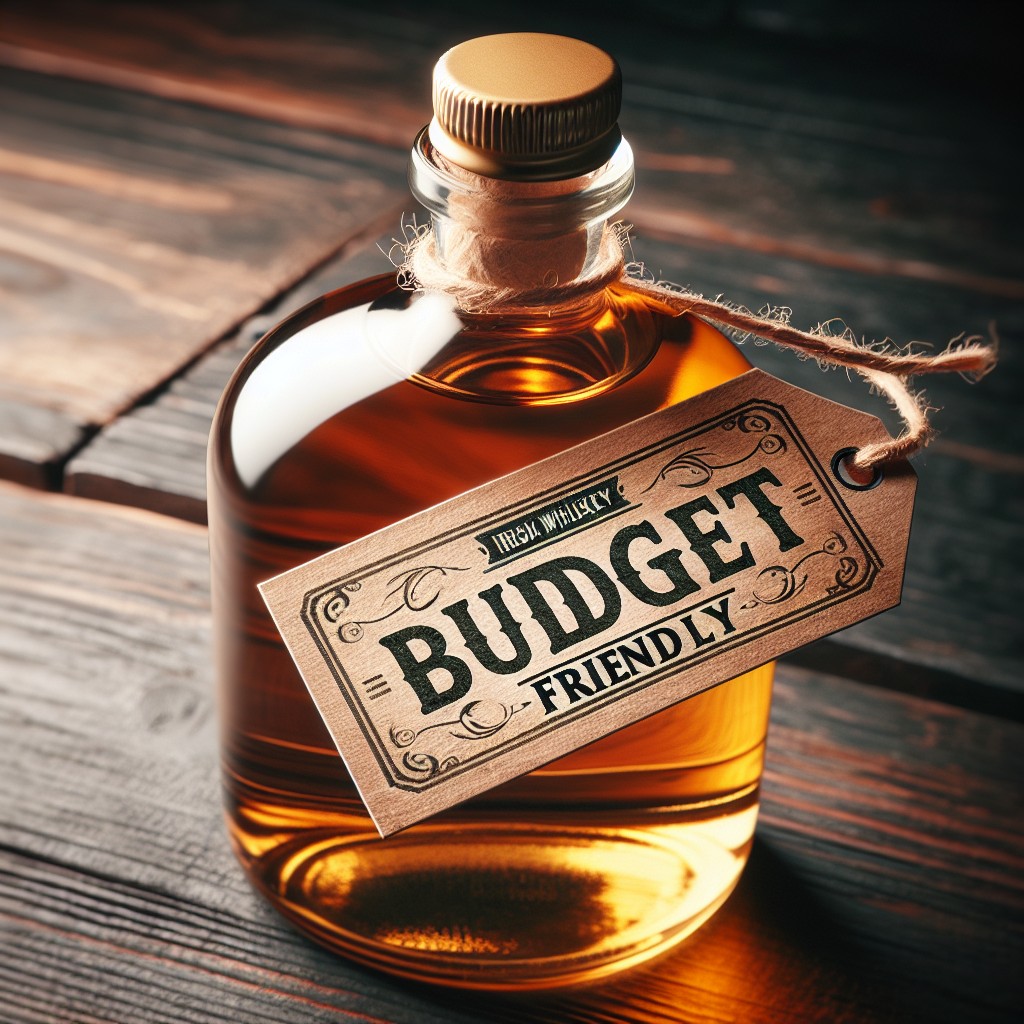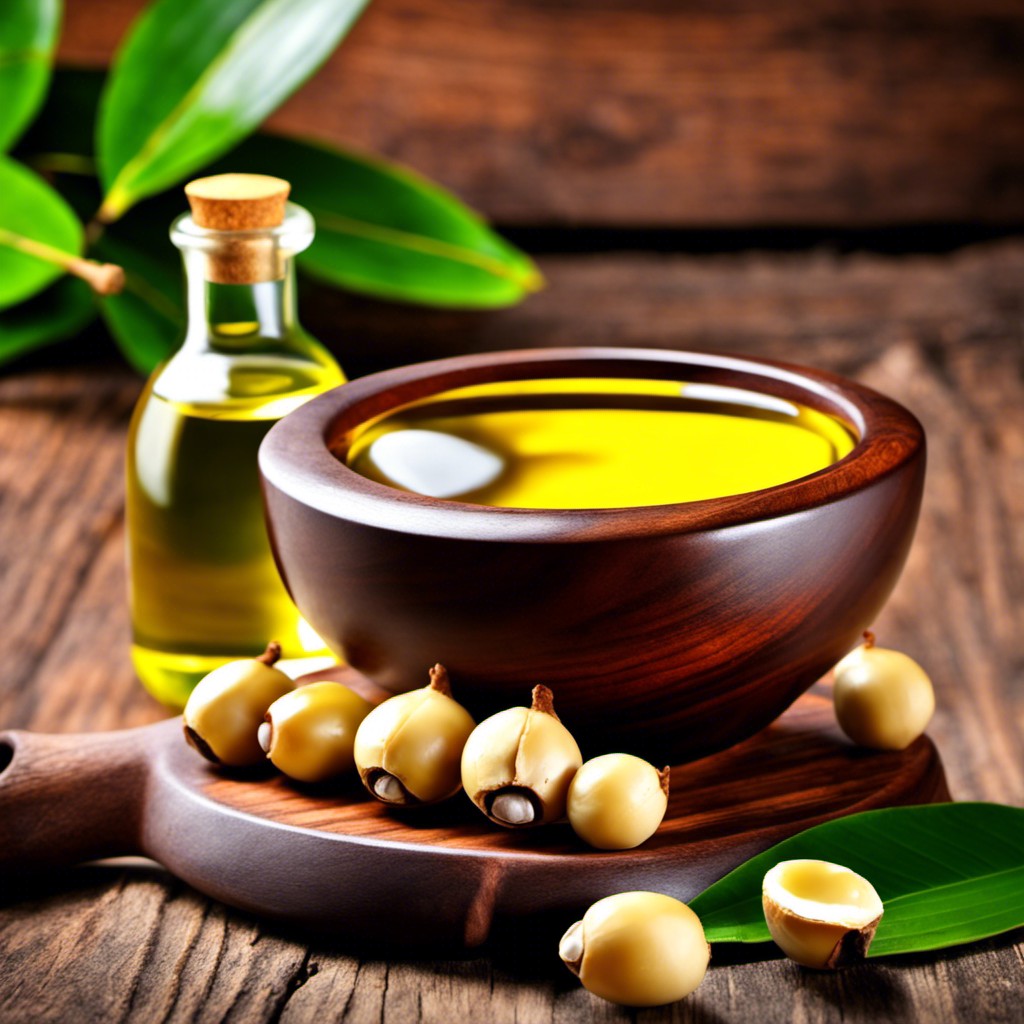Last updated on
Explore a world of exceptional coffee brewing methods as we dive into fantastic French press alternatives that will elevate your daily caffeine fix.
Are you a coffee lover who is tired of the same old drip coffee maker? Do you want to elevate your morning routine with a unique brewing method? Look no further than the French press! But what if you don’t have one or simply want to try something new? In this article, we will explore some alternative methods for making delicious coffee without a French press. Get ready to impress your taste buds and your wallet with these budget-friendly options.
Pour-Over Coffee
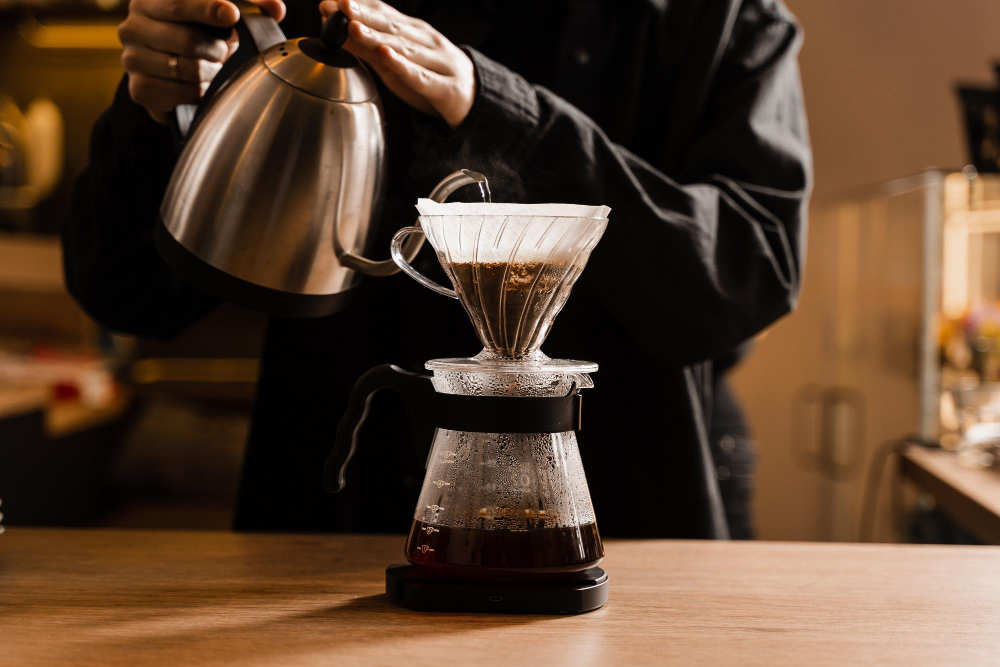
Pour-over coffee is a simple and affordable alternative to French press brewing. All you need is a pour-over dripper, paper filter, ground coffee beans, and hot water.
The process involves pouring hot water over the grounds in circular motions until the desired amount of coffee has been brewed.
One of the benefits of pour-over brewing is that it allows for greater control over the strength and flavor profile of your cup. By adjusting factors such as grind size, water temperature, and pouring technique, you can create a customized brew that suits your taste preferences.
Another advantage to this method is its portability – all you need are some filters and ground beans to make great-tasting coffee on-the-go! Plus with no bulky equipment or electricity required like an espresso machine or drip maker would require.
AeroPress
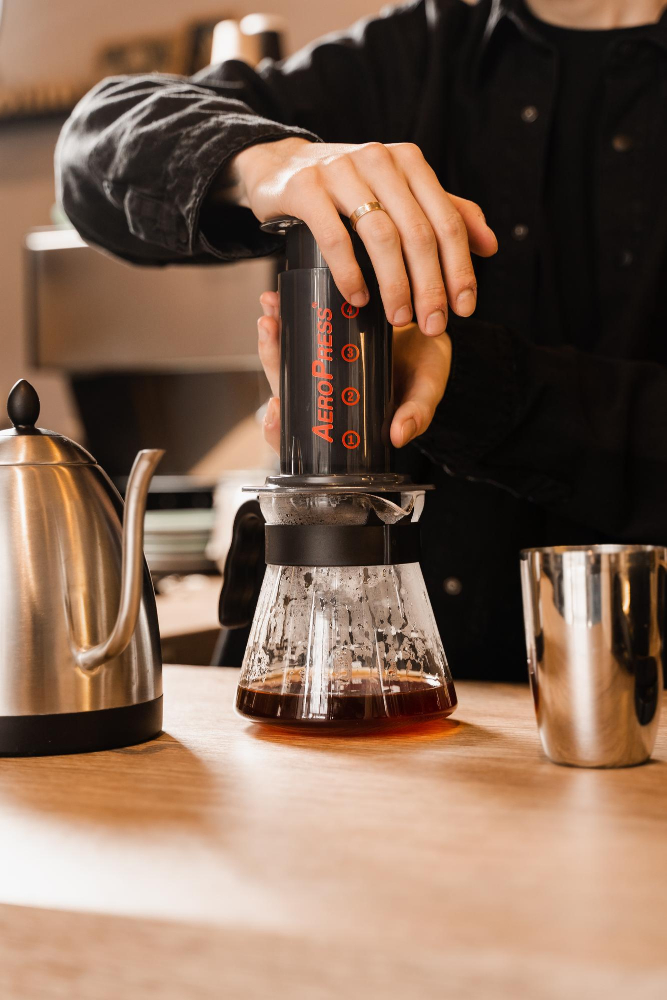
This compact and portable device uses air pressure to extract the flavors from your coffee grounds, resulting in a smooth and rich cup of joe. The AeroPress is an excellent alternative to the French press for those who want something more convenient or travel-friendly.
To use an AeroPress, you’ll need freshly ground coffee beans, hot water (around 175-185°F), and paper filters. Simply place the filter into the cap of your Aeropress, add your desired amount of ground coffee into it followed by hot water up to its marked level on its side wall then stir gently with provided paddle before pressing down slowly using plunger until all liquid has been extracted.
One advantage of using an AeroPress over other methods like drip or pour-over is that it allows for greater control over variables such as temperature and steep time. Plus, cleanup is quick and easy since you can simply eject the used grounds directly into compost bin without having any mess around!
AeroPress Vs French Press
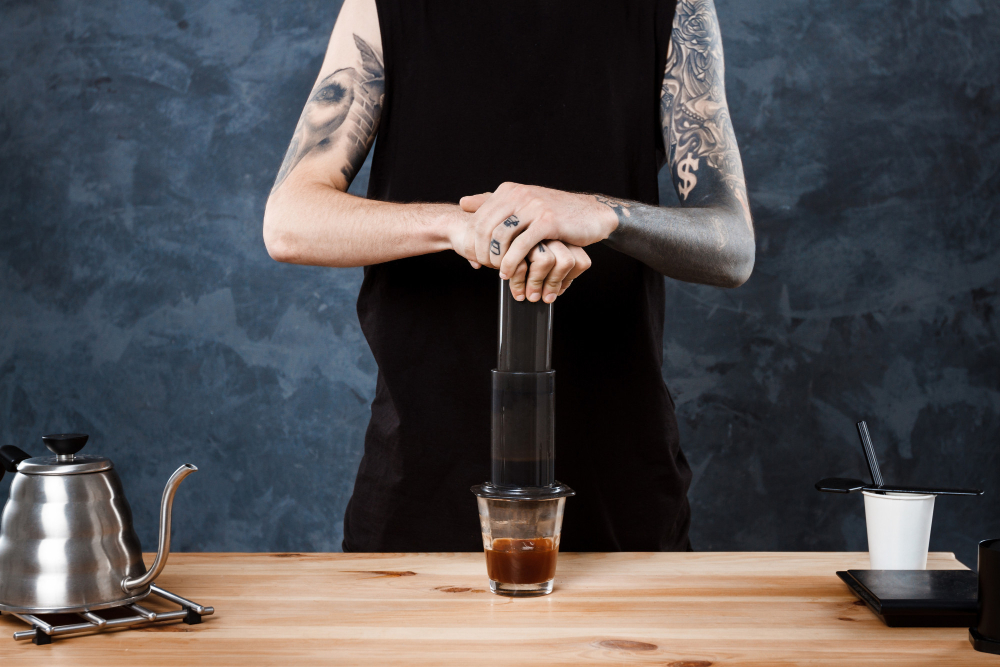
If you’re a coffee enthusiast, you’ve probably heard of both the AeroPress and the French press. Both methods are popular among coffee lovers for their unique brewing techniques that produce rich and flavorful cups of joe.
But which one is better? Let’s take a closer look at each method.
The AeroPress uses air pressure to extract flavor from ground coffee beans, resulting in a smooth and clean cup of coffee with low acidity levels. It’s also incredibly versatile – it can be used to make everything from espresso-style shots to cold brews.
On the other hand, the French press relies on immersion brewing where ground beans steep in hot water before being pressed through a metal filter. This results in an intense flavor profile with bold notes that many people love.
Moka Pot
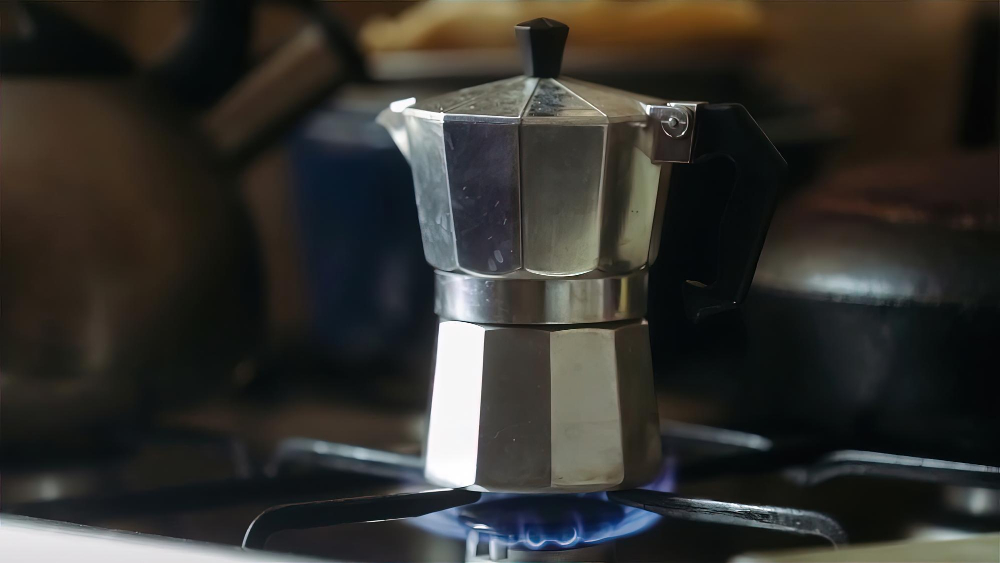
It’s an excellent alternative to French press, especially if you’re looking for something compact and easy to use. The Moka pot works by using steam pressure to brew coffee, which results in a rich and flavorful cup of joe.
To make coffee with a Moka pot, fill the bottom chamber with water up to the valve level. Then add your favorite ground coffee into the filter basket and screw it onto the bottom chamber tightly.
Place it on top of your stove over medium heat until you hear gurgling sounds indicating that all water has passed through grounds.
The result is strong espresso-like concentrated brew perfect for lattes or cappuccinos but can be diluted with hot water if desired. One thing worth noting about this brewing method is that cleaning can be tricky due to its design; however, once mastered, it becomes effortless.
Cold Brew Coffee

This method involves steeping coarsely ground coffee beans in cold water for an extended period of time, usually 12-24 hours. The result is a low-acidic and less bitter cup of joe that’s perfect for hot summer days or as an alternative to your regular iced coffee.
To make cold brew at home, all you need is some coarsely ground coffee beans (preferably medium roast), filtered water, and a container with a lid. Mix the grounds with water in the container and let it sit overnight or up to 24 hours in your fridge.
Once done steeping strain out any remaining solids using cheesecloth or paper filter.
The best part about making cold brew at home? You can customize it however you like! Add milk or creamer if desired; sweeten with sugar syrup; add spices such as cinnamon sticks before brewing – there are endless possibilities when it comes to flavor combinations!
Drip Coffee Maker
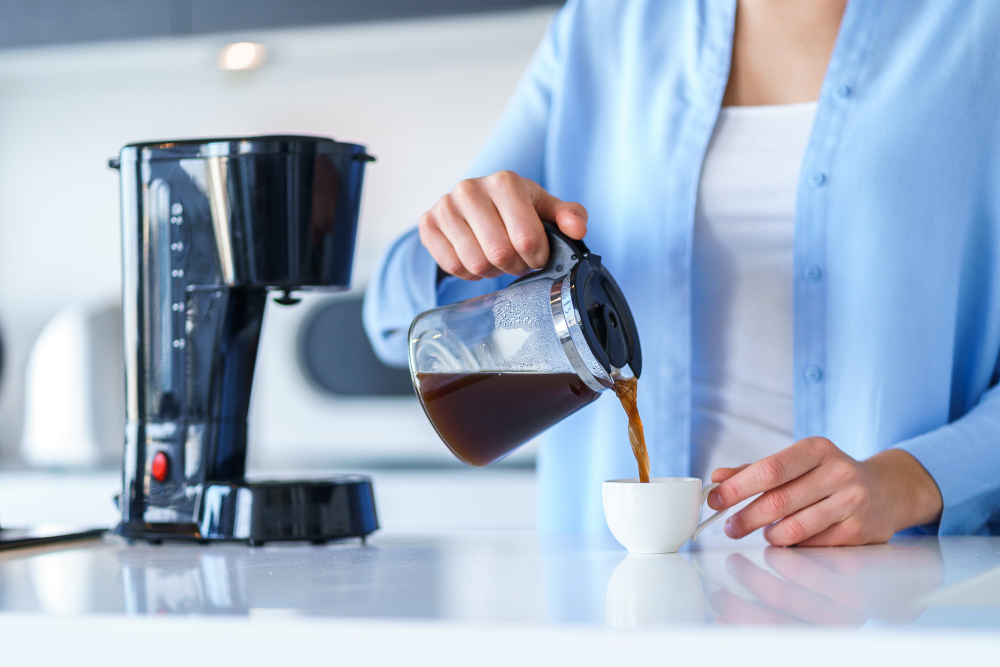
It’s easy to use and can brew large quantities of coffee at once, making it perfect for busy mornings or entertaining guests.
To use a drip coffee maker, all you need is ground coffee beans and water. Simply fill the machine with water according to its instructions, add your desired amount of ground beans into the filter basket, turn on the machine and wait for it to finish brewing.
One advantage of using a drip coffee maker over other methods like French press or pour-over is that it produces consistent results every time. Plus, many models come with programmable features such as auto-brewing so that your morning cuppa will be ready when you wake up!
However, some people argue that this method doesn’t produce as rich or flavorful taste compared to other brewing methods like French press or pour-over because paper filters absorb some oils from the grounds which contribute flavor notes in brewed coffees.
Espresso Machine
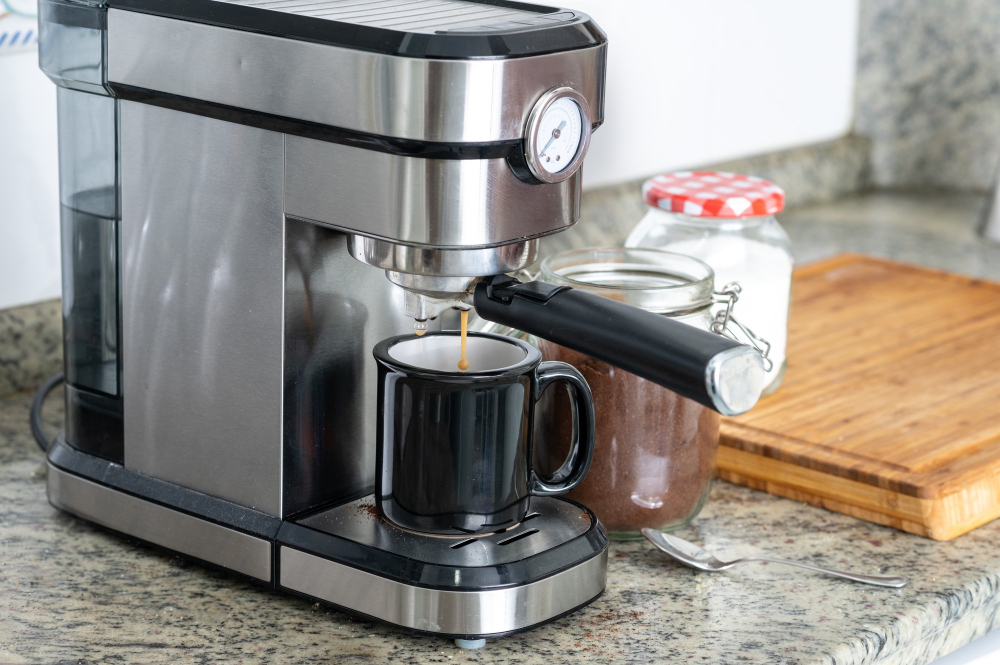
These machines use high pressure to extract the best of the coffee beans, resulting in a rich and creamy espresso shot that can be enjoyed on its own or used as a base for other drinks like lattes or cappuccinos.
While espresso machines can be more expensive than other brewing methods, they offer unparalleled quality and versatility. There are many types of espresso machines available on the market, from manual lever models to fully automatic ones with built-in grinders.
If you’re looking for an affordable option that still delivers excellent results, consider getting a semi-automatic machine with a separate grinder. This will allow you to control every aspect of your brew while keeping costs down.
Investing in an espresso machine is worth it if you’re serious about your coffee game.
Turkish Coffee
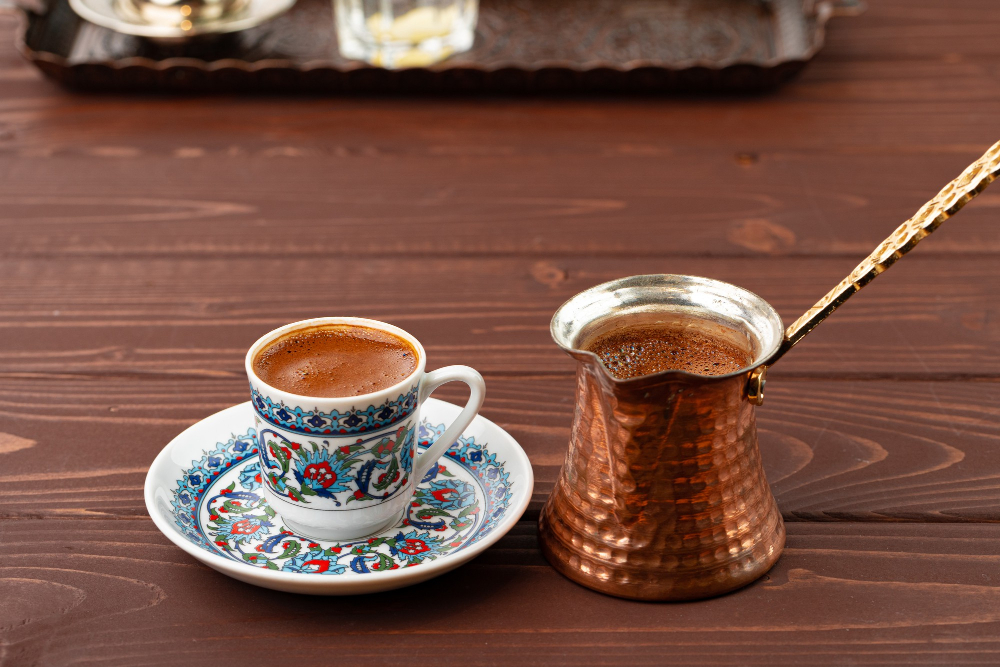
It’s a unique way of making coffee that involves boiling finely ground beans in water and serving it unfiltered. The result is an intense, full-bodied cup of coffee with a thick layer of foam on top.
To make Turkish coffee, you’ll need finely ground beans (even finer than espresso), cold water, sugar (optional), and a cezve or ibrik – the traditional copper or brass pot used to brew Turkish coffee.
Start by adding one heaping teaspoon of the fine grounds per 3 ounces (90 ml) into your cezve along with sugar if desired. Add cold water to fill up the pot but leave some space at the top for foam formation during boiling process.
Place your cezve over low heat until it starts simmering then remove from heat before it boils over. Repeat this step two more times while stirring occasionally so as not to burn any grounds stuck at bottom Pour slowly into small cups without disturbing sedimentation which will settle down after few minutes.
Vietnamese Coffee
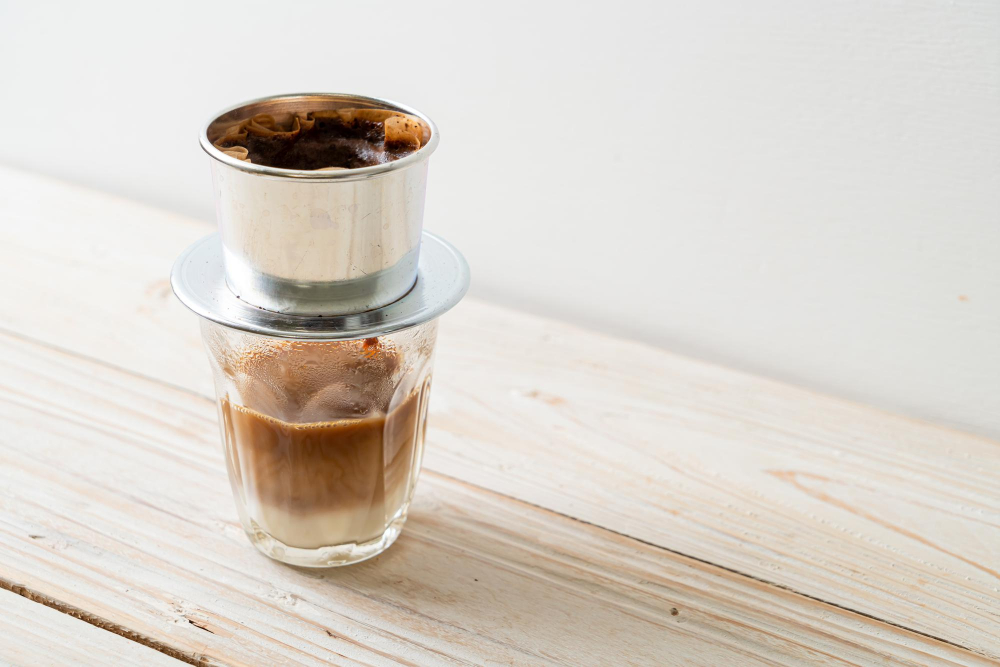
This brewing method uses a small metal filter called a phin, which sits on top of your cup or mug. The filter holds ground coffee while hot water slowly drips through it, creating an intense and flavorful brew.
What sets Vietnamese coffee apart from other methods is the use of sweetened condensed milk instead of sugar or creamer. This gives the drink its signature creamy texture and sweetness that pairs perfectly with strong Vietnamese-grown Robusta beans.
To make Vietnamese coffee at home, you will need a phin filter, medium-coarse ground Robusta beans (or any dark roast), hot water just off boiling point (around 200°F), and sweetened condensed milk.
Start by adding two tablespoons of condensed milk to your cup or glass. Then place the phin on top with one tablespoon of ground coffee inside it.
Slowly pour in enough hot water to cover the grounds completely before letting it drip through for about four minutes until all water has passed through. Once finished dripping add more hot water if desired for taste preference.
Kalita Wave

It features a flat-bottomed dripper with three small holes at the bottom, which allows for even extraction and consistent brewing. The Kalita Wave also comes with its own unique filters, which are thicker than most other paper filters and help to prevent any unwanted flavors from seeping into your coffee.
To use the Kalita Wave, you’ll need to heat up water to just below boiling point and wet the filter before adding your ground coffee. Then slowly pour hot water over the grounds in circular motions until you reach your desired amount of brewed coffee.
One of the benefits of using a Kalita Wave is that it produces clean-tasting cups without any bitterness or acidity commonly found in French press brews. It’s easy to clean and doesn’t require much maintenance compared to other brewing methods like espresso machines or drip makers.
Chemex
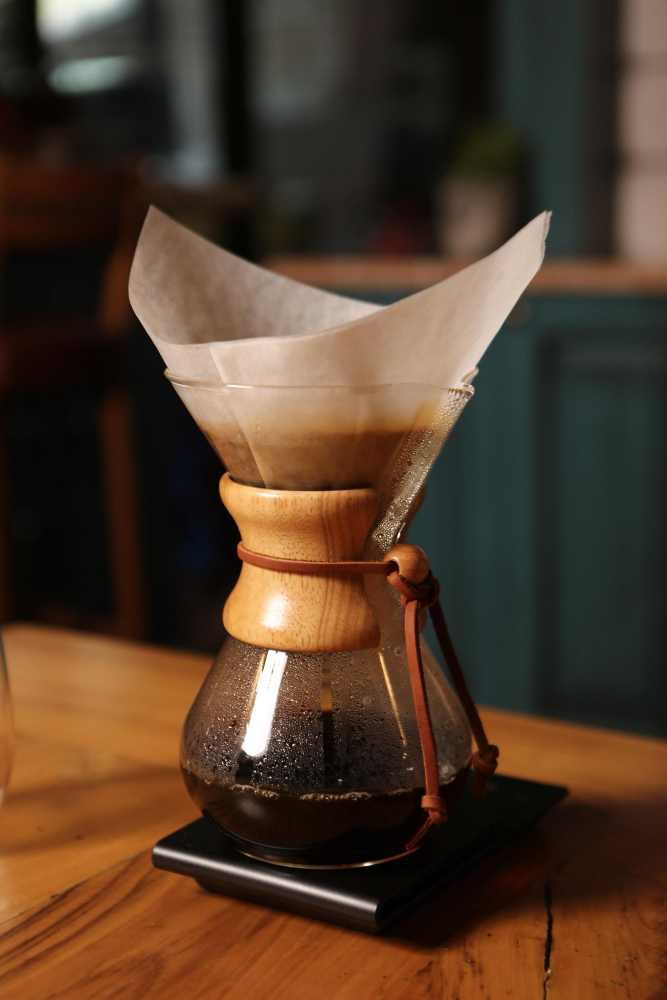
It’s known for its elegant design and ability to produce a clean, bright cup of coffee. The Chemex uses thick paper filters that remove any sediment or oils from the coffee, resulting in a smooth and flavorful brew.
To use the Chemex, you’ll need to heat water to just below boiling point and grind your beans medium-coarse. Then place your filter into the top of the carafe with three folds on one side facing towards spout (this helps prevent clogging).
Rinse it with hot water before adding ground coffee.
Slowly pour hot water over grounds in circular motions until they are fully saturated then let it sit for about 30 seconds before continuing pouring more slowly until you reach desired amount of brewed liquid.
The result is an aromatic cup of joe that highlights all those subtle flavor notes often lost in other brewing methods.
Chemex Vs French Press

If you’re looking for a coffee brewing method that produces a clean and bright cup of coffee, the Chemex might be your perfect match. This pour-over brewer uses thick paper filters to remove any sediment or oils from the coffee, resulting in a smooth and crisp flavor profile.
On the other hand, if you prefer full-bodied and rich cups of joe with more texture and depth, then French press might be your go-to option. The metal mesh filter allows some oils to pass through into your cup which gives it its signature bold taste.
Both methods have their pros and cons depending on what kind of experience you are looking for. If convenience is important to you then perhaps french press would suit better as it requires less preparation time than Chemex which needs careful attention while pouring water over grounds.
Hario V60

It’s known for its unique design, which features spiral ridges on the inside of the cone-shaped filter holder. These ridges help to create an even extraction and enhance the flavor of your coffee.
To use a Hario V60, you’ll need to place it over your mug or carafe and add ground coffee into the filter. Then, slowly pour hot water over the grounds in circular motions until you’ve reached your desired amount.
One advantage of using a Hario V60 is that it allows for precise control over brewing variables such as water temperature and pouring speed. This means you can experiment with different techniques to find what works best for you.
Hario V60 Vs French Press
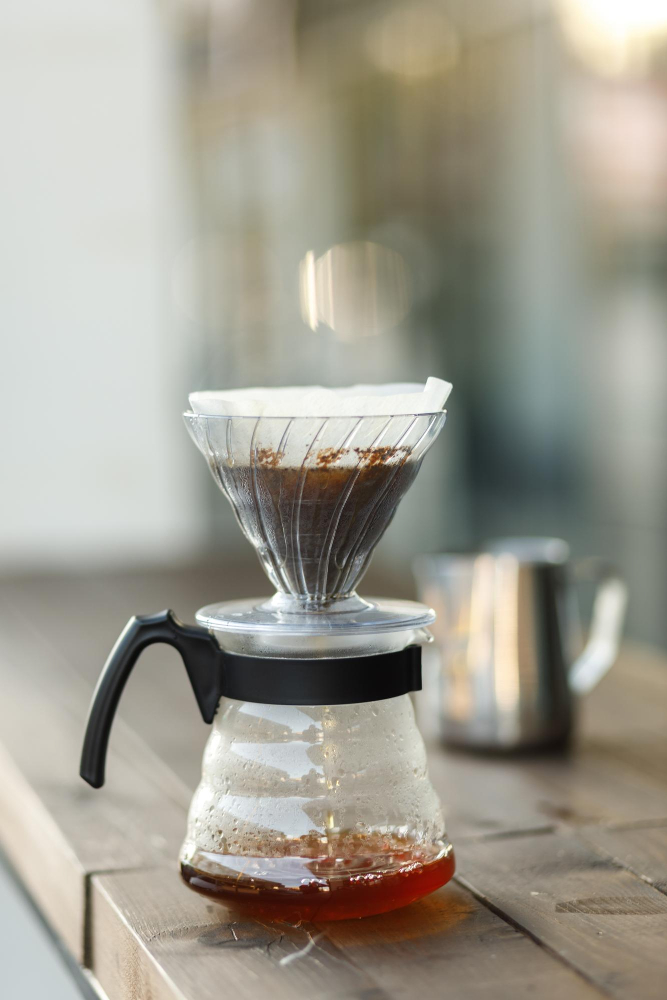
This pour-over method uses paper filters to remove any sediment or oils from the coffee grounds, resulting in a smooth and flavorful brew. But how does it compare to our beloved French press?
While both methods produce delicious cups of coffee, they have distinct differences in taste and texture. The French press creates a full-bodied cup with rich flavors due to its immersion brewing process where water sits with the grounds for several minutes before being pressed down through a metal filter.
On the other hand, Hario V60’s pour-over technique allows more control over extraction time which can result in brighter notes as well as accentuating specific flavor profiles depending on your preference.
Clever Dripper
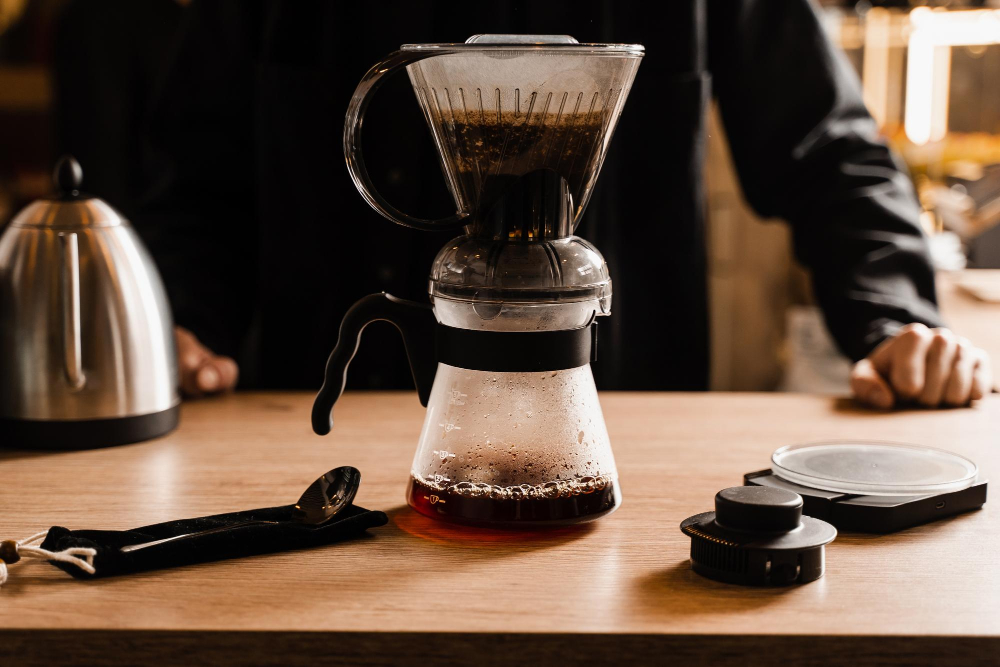
This brewing method combines the best of both worlds: it uses a paper filter like drip coffee makers, but also allows for immersion brewing like the French press.
To use a Clever Dripper, simply place your ground coffee in the filter and pour hot water over it. Let it steep for several minutes before placing it on top of your mug or carafe.
The valve at the bottom will open up and allow your freshly brewed coffee to flow through.
One advantage of using this method is that you can easily control how long your coffee steeps without worrying about over-extraction or bitterness. Plus, cleanup is quick and easy since all you have to do is dispose of the used paper filter.
Clever Dripper Vs French Press
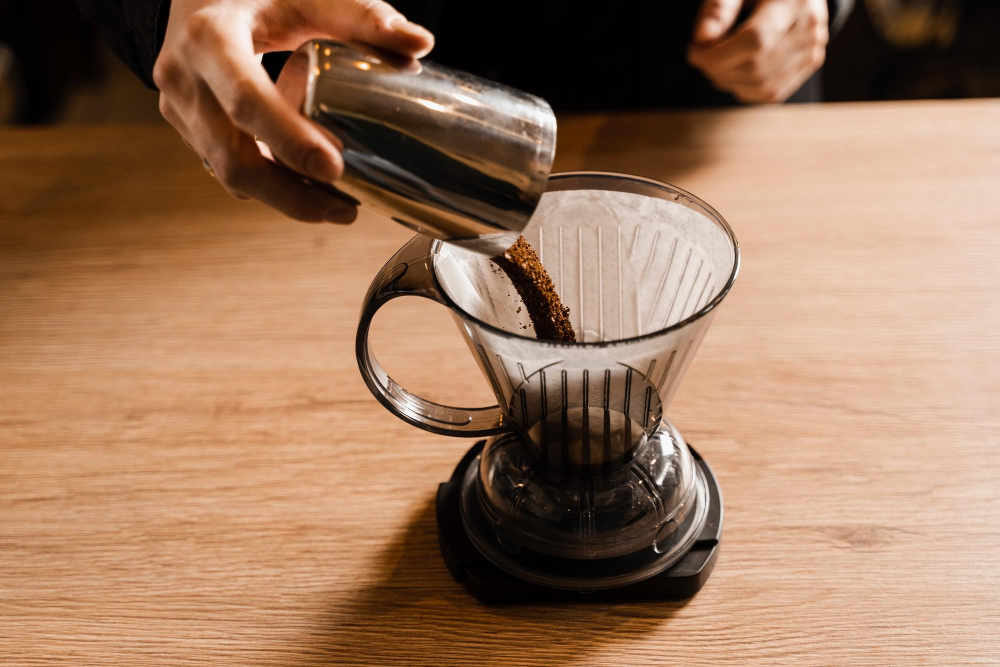
This brewing method combines the best of both worlds: it uses immersion brewing like a French press but has a paper filter that removes sediment and oils, resulting in cleaner-tasting coffee.
Compared to the French press, which can sometimes produce inconsistent results due to variations in grind size or steeping time, the Clever Dripper is more forgiving. It’s also easier to clean since there are no metal filters involved.
To use a Clever Dripper, simply place your ground coffee into the dripper with hot water and let it steep for 2-4 minutes before placing it on top of your mug. The valve at the bottom will release once placed on top of your cup allowing brewed coffee through while keeping grounds out.
French Press Alternatives Comparison
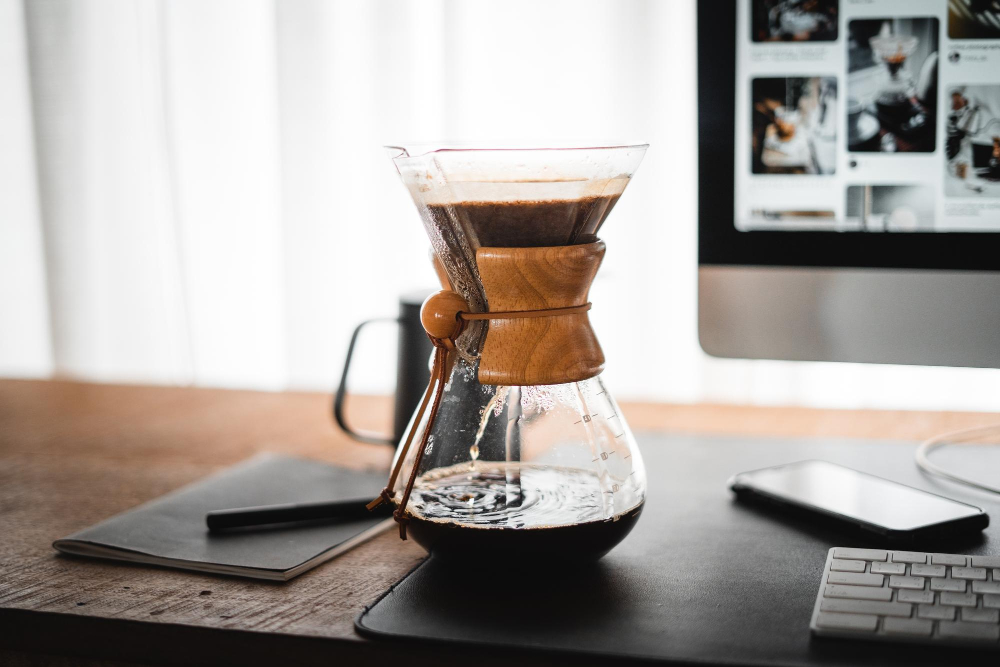
Each brewing method has its unique characteristics and produces a different taste profile. For example, pour-over coffee is known for its clean and bright flavor while the Moka pot creates a strong and bold espresso-like brew.
When comparing these methods to the French press, it’s essential to consider factors such as ease of use, cost-effectiveness, convenience in cleaning up after brewing your coffee or tea. Some methods require special equipment like an AeroPress or Chemex while others only need hot water and ground beans.
FAQ
What can I use if I don’t have a French press?
If you don’t have a French press, you can use alternative coffee brewing methods such as Chemex, Hario V60, Clever Dripper, or AeroPress.
Can you make French press without French press?
Yes, making French press coffee without a French press is possible by using a spoon; simply put 1-2 tablespoons of coarse ground coffee into a bowl and adjust the coffee strength by altering the amount of grounds used.
Why is French press less healthy?
French press coffee is considered less healthy due to its lack of a paper filter, which may slightly raise cholesterol levels and, when consumed in large amounts, is associated with increased heart disease risks.
How do you press coffee without a French press?
To press coffee without a French press, use a Faux French Press method by boiling water, adding coffee grounds to a deep bowl, saturating grounds with boiling water, adding more water per serving, and pressing grounds to the bottom using a spoon.
What are the main differences between French press coffee and other brewing methods?
French press coffee differs from other brewing methods primarily in its use of a plunger and metal mesh filter, allowing more oils and fine particles to remain in the final brew, resulting in a richer and more full-bodied flavor.
Which coffee brewing techniques can provide a similar taste and texture to the French press method?
The coffee brewing techniques that can provide a similar taste and texture to the French press method are the AeroPress, siphon brewing, and cold brew.
How does the steeping time in a French press compare to other brewing methods in terms of flavor extraction?
French press steeping time typically allows for more flavor extraction compared to other brewing methods due to its longer immersion process.
Recap
Liked this article? Here's what you can read next:
